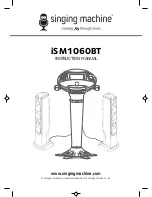
Line-array basics
What is a line-array?
A line-array is a sound system made up out of a group of identical, omni-directional radiating
elements oriented in a tightly spaced, straight line. If this line is long enough compared to the
wavelength the elements behave acoustically as if it were a single source. The basics of this
principle are employed in today‘s vertical line-array systems.
Because of the physical dimensions of conventional HF compression-drivers it is impossible to
meet the criteria of tight spacing of the sources for the frequency bandwidth it operates. To solve
this most line-array systems use waveguides to convert the circular wave front emerging from a
HF drivers exit to a rectangular plane enabling multiple sources to be tightly spaced.
Furthermore the wave front emerging from the waveguide should have tight vertical dispersion
in order to avoid unwanted interference. The way this is achieved largely determines the vertical
performance of the line-array system at the HF bandwidth.
Line-arrays behaviour differs in some respects remarkably from conventional systems. The
greatest benefit of a line-array is that, when properly designed, the acoustical power of many
cabinets can be combined without the unwanted interference that conventional systems show.
Furthermore its vertical directivity can be adapted to closely fit the venue.
Vertical directivity of a line-array versus a conventional system
While conventional system will almost inevitably cause harmful interference when using more
than one system, a well-designed line-array has the advantage of better acoustic energy
distribution towards the projected area. Although it‘s a misconception that with a line-array no
interference will occur, due to it‘s tight spacing of the omni-directional MF and LF sources most
of the cancellations occur outside the projected area. In fact it is the ‘wanted‘ interference that
creates the ‘bullet-shape‘ often seen in simulation software.
The vertical directivity of the MFs and LFs can be altered within limits by curving the shape of
the array. Due to the HF waveguide‘s tight vertical dispersion, necessary for proper functioning
of the array, curving the array is also bound to outer limits so it doesn‘t create harmful areas of
hotspots and poor HF coverage. The angles of the HF-waveguides in the Dreamline™ have
been configured for optimised performance in relation with the MF/LF-drivers.
Vertical directivity of low frequencies
versus array size
The previously described ‘bullet-shape‘, as a
rule of thumb, applies for wavelengths
equal to or smaller than the vertical array
sizes. For a wavelength equal to the array
length
the
vertical
dispersion
will
approximately be 90-degrees. For the
frequencies below this frequency, hence
longer wavelengths, it will gradually turn
into an omni-directional source. Therefore,
vertical directivity control and maximum
SPL of the low and low-mid frequencies
greatly benefit from a larger array size.
Fig.1 Typical characteristic of a 2 meter array
at 170 Hz.




































